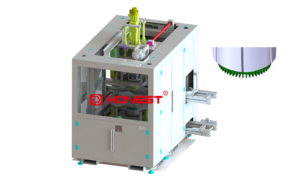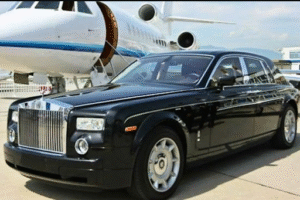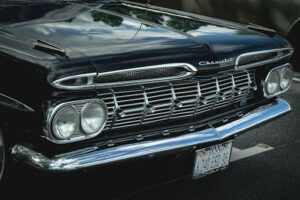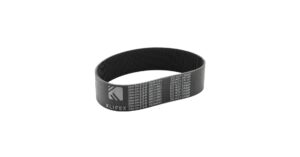Planning to enhance your commute in Blue Springs without exceeding your budget? Opting for used or certified pre-owned cars is a practical choice, and for many drivers, it feels like the smartest route. But here’s a common question that often comes up: Can you lease a used car? While leasing is generally associated with brand-new models, the reality is that leasing a pre-owned vehicle is absolutely possible.
This guide takes you through the concept in detail—how it works, where to find used car lease options, the benefits, potential drawbacks, and what you need to consider before signing a lease. So, if you’ve ever wondered about saving money while still enjoying the flexibility of a lease, let’s dive in and answer that very question: Can you lease a used car?
The Basics of Car Leasing
Before breaking down the specifics of leasing a used car, it’s important to understand how leasing in general works. A car lease is essentially a long-term rental agreement. Instead of purchasing the car outright, you pay a monthly fee to drive it for a predetermined time, usually between 24 and 48 months. At the end of the lease, you either return the vehicle, extend the lease, or sometimes buy it outright.
In a traditional lease for a new vehicle, the monthly payment is calculated based on the depreciation value of the car over the lease term, plus interest, taxes, and fees. Since new cars depreciate quickly during the first few years, leases are structured around that drop in value.
Now, when it comes to used cars, the depreciation curve looks a little different—and that changes how leasing works.
So, Can You Lease a Used Car?
Yes, you can lease a used car. But here’s the nuance: not every dealership advertises it, and not every used car qualifies. Most of the time, when people talk about leasing a used car, they’re referring to leasing a certified pre-owned (CPO) vehicle.
CPO vehicles are usually low-mileage, relatively new cars that have been inspected, refurbished, and certified by the manufacturer. Because these cars already went through their steepest depreciation period as new cars, the leasing terms can sometimes be more affordable than leasing brand-new models.
This is especially appealing for drivers in places like Lee’s Summit or Blue Springs who want the flexibility of a lease, but without the high monthly costs that come with brand-new cars.
Why Leasing a Used Car Can Make Sense
Let’s look at some of the main reasons why leasing a used car is an attractive option.
1. Lower Monthly Payments
Since the vehicle has already depreciated significantly in its first few years, the remaining depreciation cost that you pay during the lease term is much smaller. That translates directly into lower monthly payments.
2. Certified Pre-Owned Reliability
Leasing is most commonly available on CPO cars. That means the car you’re leasing isn’t just any random used car—it has undergone inspections, passed quality checks, and often comes with a manufacturer-backed warranty.
3. Shorter Lease Commitments
Many used car leases have shorter terms, such as 24 to 36 months, compared to standard new car leases that can stretch up to 48 months. This gives you more flexibility if you don’t want to commit to a long-term contract.
4. Access to Higher-End Models
A used car lease sometimes allows you to afford models that may have been outside your budget when new. For example, leasing a used luxury sedan or SUV might be much more realistic compared to taking out a lease on the current year’s brand-new version.
5. Reduced Depreciation Anxiety
With a used lease, you don’t carry the burden of worrying about rapid depreciation. The car’s value has already stabilized after its initial drop, so your lease is structured around a more predictable curve.
What to Watch Out For in a Used Car Lease
Of course, while there are many benefits, leasing a used car also has its challenges. It’s not as straightforward as signing up for a new car lease, and there are important factors you need to consider.
1. Limited Availability
Not every dealership offers used car leasing. Even if they do, the selection may be limited to specific brands or models. Typically, luxury automakers and some mainstream brands are more open to offering CPO leasing programs.
2. Higher Interest Rates
In some cases, leasing a used car can involve slightly higher money factors (the leasing equivalent of interest rates). Lenders sometimes see used vehicles as a bigger risk than new ones, so they adjust the financing terms accordingly.
3. Mileage Restrictions
Just like new car leases, used leases also come with mileage caps. If you exceed the allowed miles, you’ll pay a penalty per mile. This is something to carefully negotiate if you expect to drive a lot in Blue Springs or beyond.
4. Limited Warranty Coverage
While CPO cars come with extended warranties, the coverage might not be as comprehensive as that of a new car. If the lease extends beyond the warranty period, you might be responsible for certain repairs.
5. Wear and Tear Rules
At the end of the lease, the car must be returned in good condition. Since the car is already used, the rules may be stricter about excessive wear, scratches, or interior damage.
The Process of Leasing a Used Car
If you’re seriously considering a used car lease, here’s how the process generally works.
- Find a Dealership Offering CPO Leasing: Start by checking with local dealers in Lee’s Summit or Blue Springs that carry certified pre-owned models. Not all dealerships advertise used leasing, so you might need to ask directly.
- Choose Your Vehicle: Look for a CPO car that meets your needs in terms of mileage, age, and condition. Usually, vehicles under four years old with lower mileage are eligible.
- Review the Lease Terms: Pay close attention to monthly payments, mileage allowances, and length of the lease.
- Understand Residual Value: This is the estimated value of the car at the end of the lease term. It affects your monthly payments and your buyout price if you decide to purchase the car later.
- Sign and Drive: Once you finalize terms, you’re good to go. Enjoy the benefits of driving a newer, reliable vehicle without committing to a full purchase.
Certified Pre-Owned Leasing vs. Traditional Leasing
It’s important to compare how leasing a used car stacks up against a standard new car lease.
- Cost: Used leases often cost less per month, but new leases sometimes offer better promotions or incentives.
- Selection: New car leases give you access to the latest models and trims, while CPO leases are limited to what’s available in the used inventory.
- Warranty: New cars almost always cover the full lease term under warranty. Used cars may only partially overlap with the warranty timeline.
- Technology and Features: New leases give you cutting-edge features, while CPO leases offer slightly older tech at lower prices.
In short, if budget is your top concern, leasing a used car could be the smarter move. If you care more about driving the latest model with all the bells and whistles, a new car lease might be better.
Is Leasing a Used Car Right for You?
Deciding whether a used car lease is right for you depends on your priorities. Ask yourself:
- Do you want lower monthly payments while still driving a high-quality vehicle?
- Are you comfortable with limited availability and possibly higher interest rates?
- Do you prefer flexibility over long-term ownership?
- Would you like to explore higher-end cars that may be out of reach when new?
If you answered yes to most of these questions, then leasing a used car could be a great option for your lifestyle.
Tips for Getting the Best Deal on a Used Car Lease
- Negotiate the Price: Even though it’s a lease, the capitalized cost (or agreed-upon value of the car) can be negotiated.
- Check the Vehicle History: Ensure the CPO car has a clean record with no major accidents.
- Review the Warranty Coverage: Understand what is and isn’t covered during your lease term.
- Consider Mileage Needs: Don’t underestimate how much you’ll drive. Pick a lease with enough miles to avoid expensive penalties.
- Compare Across Dealers: Different dealerships may have very different used lease options, so shop around before committing.
Final Thoughts
So, can you lease a used car? The answer is yes—and in many cases, it might be the smarter financial decision. Leasing a certified pre-owned vehicle gives you access to lower payments, reliable performance, and the flexibility of driving without long-term ownership. While there are some trade-offs, such as limited selection and potential interest rate differences, the benefits often outweigh the drawbacks for budget-conscious drivers.
For residents of Lee’s Summit, Blue Springs, or anywhere else looking for a cost-effective way to upgrade their commute, a used car lease could be exactly the solution you’re looking for. It offers the balance between affordability and quality, allowing you to enjoy your driving experience without stretching your budget.
At the end of the day, leasing a used car is all about options—and having more options always works in your favor.











